
In September 2022 Oxbow's bookshop and distribution buisness merged with Pen & Sword Books, a family run independent publisher of history books. The book distribution aspect of our business will continue to bring you some of the best books in the field of archaeology and related disciplines as Casemate UK. The Oxbow Books publishing imprint remains as a separate entity, still sold and distributed exclusively by us.
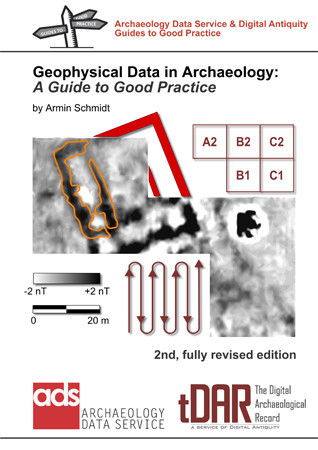
Format: Paperback
Pages: 88
ISBN: 9781782971443
Pub Date: 07 Mar 2013
Series: Archaeology Data Service & Digital Antiquity Guides to Good Practice
Description:
Anyone who has tried to archive archaeological geophysics data will have wondered what might be the most comprehensive and practical approach. This question is addressed by this Guide’s extensively revised 2nd edition, which systematically explores what should be included in an Archive, illustrated with relevant examples. A conceptual framework is developed that allows assembling data and meta-data so that they can be deposited with an Archiving Body.
This framework is also mapped onto typical database structures, including OASIS and the English Heritage Geophysics Database. Examples show step-by step how an Archive can be compiled for deposition so that readers will be able to enhance their own archiving practice. Geophysical data are sometimes the only remaining record of buried archaeological features when these are destroyed during commercial developments (e.g. road schemes). To preserve them in an Archive can therefore be essential. However, it is important that data are made available in formats that can still be read in years to come, accompanied by documentation that gives meaningful archaeological context. This Guide covers the creation of the necessary metadata and data documentation. There is no point preserving data if they cannot be used again; therefore this Guide is essential for anyone using geophysical data.

Format: Paperback
Pages: 462
ISBN: 9789088900969
Pub Date: 28 Feb 2013
Description:
Throughout its long history, stretching from the 25th Dynasty (c. 752-656 BC) to the Ottoman Period (c. 1500-1811 AD), Qasr Ibrim was one of the most important settlements in Egyptian Nubia.
The site has produced an unprecedented wealth of material and due to the – even for Egypt – extraordinary preservation circumstances, includes objects that are made of perishable organic materials, such as wood, leather, and flax.The present volume focuses on one of these groups: footwear that is made from leather and dated to the Ottoman Period. The footwear, recovered during the years that the Egypt Exploration Society worked at the site, is described in detail, including a pictorial record consisting of photographs and drawings (both technical and artist’s impressions). This is the first time that Ottoman footwear from Egypt (and outside of Egypt) has been analyzed in detail. The preliminary analysis focuses on footwear technology, within the framework of the Ancient Egyptian Footwear Project (AEFP; see www.leatherandshoes.nl). A broader interpretation will be combined with the results of the analyses of the finds from the other epochs of Qasr Ibrim’s history, such as the age of Christianity and the Meroitic Period.

Format: Paperback
Pages: 272
ISBN: 9781902771939
Pub Date: 28 Feb 2013
Description:
This volume presents the conclusions of a research assessment funded by English Heritage which drew together the broad community of scholars interested in marine and maritime affairs, with a remit of both quantifying the known record and establishing a clear research agenda for the future. The result is an unrivalled exploration of our maritime heritage and a challenging agenda for the future.Britain is a maritime nation.
Thus understanding the changing record of people&supl;s relationships with, and use of the sea is key to interpreting the archaeological record. People and the Sea considers all aspects of our maritime heritage; from the submerged landscapes created by changes in sea- level over the last million years, to the physical development of the modern coastline, through to ports, their hinterlands and associated maritime communities. It investigates the nature of seafaring, its associated material culture as well as people&supl;s changing perceptions and interactions with the sea. Chronological chapters, from the Palaeolithic to the 20th century, all consider a number of key themes, exploring both the current state of knowledge and priorities for future research. While the focus is on England, the themes explored are applicable to any coastal community, both in the UK and the near Continent. Written by leading academics, in consultation with numerous specialists, People and the Sea provides an unrivalled exploration of our maritime heritage and sets a challenging agenda for future research.

Format: Hardback
Pages: 432
ISBN: 9780904152630
Pub Date: 21 Feb 2013
Series: Archaeological Monographs of the British School at Rome
Illustrations: 142 illus, 2 colour plates
Description:
During the nineteenth century, antiquarians such as William Gell and George Dennis visited the ancient city of Veii, some 15 km north of Rome, and noted the rapid destruction of its archaeology. The city continued under to be under threat, and in the 1950s was the subject of ground-breaking survey and excavation by John Ward-Perkins. However, the results of his fieldwork were never published fully.
Knowledge and understanding of material culture (especially pottery, votive objects and architectural terracottas) has increased dramatically over the past fifty years, so allowing the authors to reveal the full potential of the data. This publication reaffirms many of Ward-Perkins’s original insights, and contextualizes his research within the new discoveries of the past fifty years; whilst an important contribution to our knowledge, it is also a spur to further work.
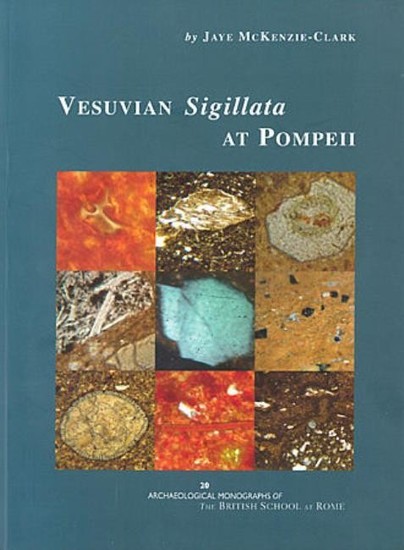
Format: Paperback
Pages: 162
ISBN: 9780904152623
Pub Date: 21 Feb 2013
Series: Archaeological Monographs of the British School at Rome
Illustrations: 32 illus, 4 colour plates, CD Rom
Description:
The destruction of Pompeii in ad 79 provides a unique opportunity to explore the use of everyday items. It allows us to identify the source and variety of products available within the city, and enables us to track changes in the consumption of goods over time. In this volume, Jaye McKenzie-Clark presents the far-reaching results of her examination of the red slip tableware within three regions of the city.
It pinpoints the initial supply and use of Vesuvian Sigillata, and investigates factors that may have led to the popularity of this style of pottery. The investigation maps the on-going manufacture of these ceramics and identifies changes in production and consumption up to the time of the eruption. Examination of the distribution within contexts of different social use also reveals distinct patterns of consumer demands and consumption within Pompeian society. Such research helps us to explore and understand the use of goods within the city of Pompeii and throughout the Roman world, and also has the potential to shed light on patterns of behaviour in modern consumer societies.

Format: Hardback
Pages: 144
ISBN: 9782840483281
Pub Date: 15 Feb 2013
Illustrations: Illustrated throughout
Description:
Florent Véniel offers here the anticipated continuation of La Vie Quotidienne de la femme au Moyen Âge. The medieval woman is presented in the context of her life, in the very heart of her society. Véniel focuses on the relationships in her life: neighbors, husband, community.
She also considers society’s view on the medieval woman in all of its complexity, sometimes even contradictory in nature. We find here the medieval woman associated with the image of Eve, symbolic of sin and carnal desire; and Mary, the mother placed above all the saints. Far from providing us with the profile of the elite medieval woman, Véniel offers research on women from agrarian society, the middle class. French Language
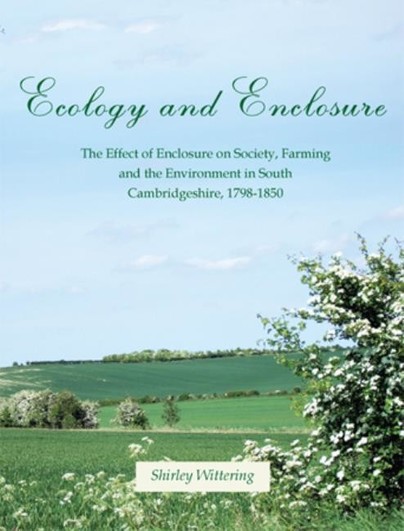
Format: Paperback
Pages: 192
ISBN: 9781905119448
Pub Date: 07 Feb 2013
Description:
South Cambridgeshire has some of the richest arable land in England and has been cultivated for millennia. By the turn of the nineteenth century industrialisation and massive population growth had resulted in an enormous increase in the demand for food, which in turn led to enclosure. But this desire to plough every available piece of land resulted in the destruction of many valuable and distinctive habitats that had existed for centuries.
The Ecology of Enclosure breaks new ground in comparing the effect of Parliamentary Enclosure with the findings of the enthusiastic 'Botanisers' from Cambridge; this reveals not only the effect of enclosure on the ecology of the land but also on the people whose link with the land was broken. The first section presents a study of social and agricultural life before enclosure, describing geology and climate; the fold-course open field system of farming and the strict stinting rules which governed how land could be used for grazing and stock movement; and the crop rotation systems employed. The second part describes the process of enclosure, including opposition to it; the changes that occurred to the landscape and within village communities as work in industry gradually replaced rural occupations; the effects of fencing on movement; and of the loss of common land to the plough. The third section is an analysis of the new study of Botany which the University of Cambridge was enjoying in the eighteenth and nineteenth centuries based on their own records and a review of some of the specific effects on the flora and fauna of the area.
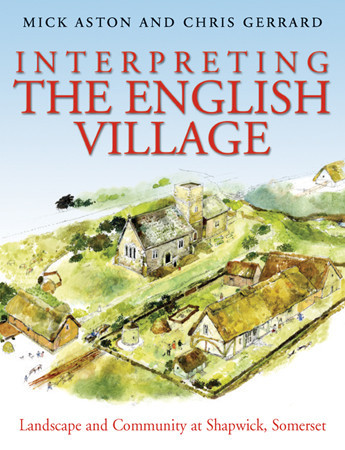
Format: Paperback
Pages: 416
ISBN: 9781905119455
Pub Date: 07 Feb 2013
Illustrations: 233 illus
Description:
An original and approachable account of how archaeology can tell the story of the English village. Shapwick lies in the middle of Somerset, next to the important monastic centre of Glastonbury: the abbey owned the manor for 800 years from the 8th to the 16th century and its abbots and officials had a great influence on the lives of the peasants who lived there. It is possible that abbot Dunstan, one of the great reformers of tenth century monasticism directed the planning of the village.
The Shapwick Project examined the development and history of an English parish and village over a ten thousand-year period. This was a truly multi-disciplinary project. Not only were a battery of archaeological and historical techniques explored - such as field walking, test-pitting, archaeological excavation, aerial reconnaissance, documentary research and cartographic analysis - but numerous other techniques such as building analysis, dendrochronological dating and soil analysis were undertaken on a large scale. The result is a fascinating study about how the community lived and prospered in Shapwick. In addition we learn how a group of enthusiastic and dedicated scholars unravelled this story. As such there is much here to inspire and enthuse others who might want to embark on a landscape study of a parish or village area. Seven of the ten chapters begin with a fictional vignette to bring the story of the village to life. Text-boxes elucidate re-occurring themes and techniques. Extensively illustrated in colour including 100 full page images.This title was the winner of the 2014 British Archaeological Association's Best Archaeological Book Award.
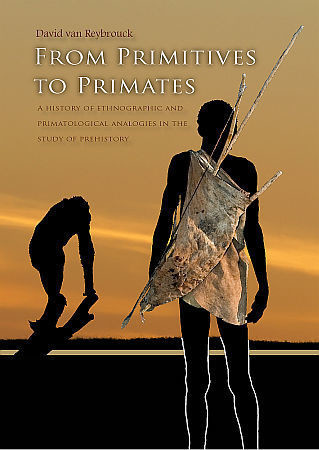
Format: Paperback
Pages: 384
ISBN: 9789088900952
Pub Date: 31 Jan 2013
Description:
Where do our images about early hominids come from? In this fascinating in-depth study, David Van Reybrouck demonstrates how input from ethnography and primatology has deeply influenced our visions about the past from the 19th century to this day – often far beyond the available evidence. Victorian scholars were keen to look at contemporary Australian and Tasmanian aboriginals to understand the enigmatic Neanderthal fossils.
Likewise, today’s primatologists debate to what extent bonobos, baboons or chimps may be regarded as stand-ins for early human ancestors. The belief that the contemporary world provides ‘living links’ still goes strong. Such primate models, Van Reybrouck argues, continue the highly problematic ‘comparative method’ of the Victorian times. He goes on to show how the field of ethnoarchaeology has succeeded in circumventing the major pitfalls of such analogical reasoning.A truly interdisciplinary study, this work shows how scholars working in different fields can effectively improve their methods for interpreting the deep past by understanding the historical challenges of adjacent disciplines.Overviewing two centuries of intellectual debate in fields as diverse as archaeology, ethnography and primatology, Van Reybrouck’s book is one long plea for trying to understand the past on its own terms, rather than as facile projections from the present.David Van Reybrouck (Bruges, 1971) was trained as an archaeologist at the universities of Leuven, Cambridge and Leiden. Before becoming a highly successful literary author (The Plague, Mission, Congo…), he worked as a historian of ideas. For more than twelve years, he was co-editor of Archaeological Dialogues. In 2011-12, he held the prestigious Cleveringa Chair at the University of Leiden.
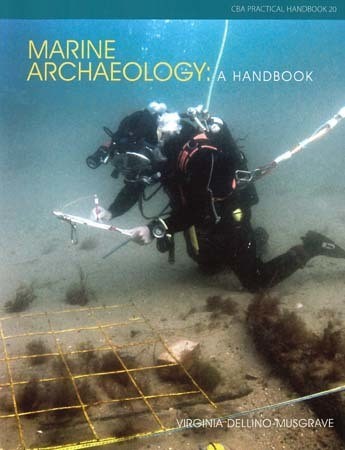
Format: Paperback
Pages: 110
ISBN: 9781902771915
Pub Date: 31 Jan 2013
Series: CBA Practical Handbook
Description:
Marine Archaeology: A Handbook aims to give easy access to a range of information about the marine historic environment. It provides a useful guide for all those involved in the marine environment, from local authorities to recreational divers and interested amateurs. In recent years there has been increased awareness of both the potential and the fragility of the marine and maritime zones.
Working in these zones presents a range of challenges, from the practical to the legal, which this Handbook attempts to explain.The book begins by defining what the marine environment is, and provides a brief history of maritime archaeology. It also considers the challenging question of the differences between marine archaeology and commercial salvage. Further chapters explain the organisation of marine archaeology in the UK and the planning of marine archaeological projects, with essential information on areas of responsibility and sources of information. A summary of the complex legal framework for the management of the marine zone around the UK is followed by discussion of European and UNESCO conventions on marine heritage. A glossary and extensive bibliography make this book essential reading for all amateurs and professionals with an interest in our marine historic environment.
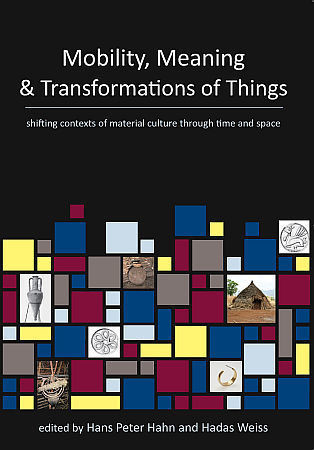
Format: Paperback
Pages: 176
ISBN: 9781842175255
Pub Date: 31 Jan 2013
Illustrations: b/w illus
Description:
Things travel around the globe: they are shipped as mass consumer goods, or transported as souvenirs or gifts. There are infinite ways for things to be mobile, not only in the era of globalisation but since the beginning of time, as the earliest traces of long distance trading show. This book investigates the mobility of things from archaeological and anthropological perspectives.
Material Objects are characterised by temporal continuity, embodying a prior existence with lingering effects. Yet the material continuity disguises the transformations they may undergo, which only become evident upon closer examination. Objects are in perpetual flux, leaving visible traces of their age, usage, and previous life. While travelling through time, objects also circulate through space, and their spatial mobility alters their meaning and use with respect to new cultural horizons. As objects transform through time and space, so does the value attributed to them. Mapping out itineraries of value in the realm of the material, allows us to grasp the nature of a given social formation through the shape and meaning taken on by its valued 'stuff'. It also provides insights into the nature of materiality, through the value ascribed to objects at a given point in time and space. This edited volume brings together studies of material culture, materiality and value, with regard to the mobility of objects, with the aim of tracing the ways in which societies constitute their valued objects and how the realm of the material reflects upon society.
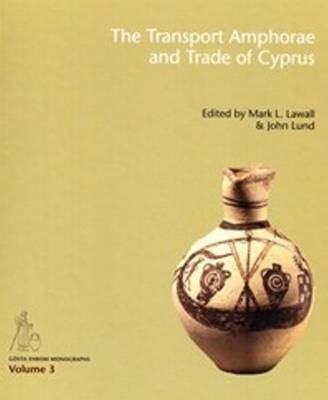
Format: Hardback
Pages: 244
ISBN: 9788771242133
Pub Date: 31 Jan 2013
Description:
Placed as a stepping stone on the sea route between Europe and the New East, Cyprus has always been a meeting place of many cultures. Though rarely united politically through many millennia of history - and for extended periods subject to foreign rule - the island nonetheless managed to maintain specific and unique identities. This publication seeks to throw new light on important aspects of the economy of Cyprus between c.
700 BC and AD 700 through a concerted study of the transport amphorae found in and around the island. These standardised containers of fired clay were commonly used for shipping foodstuffs from their places of production to the consumers in antiquity. Completely preserved or found only in fragments, such vessels are a prime source of information about the island's exports and imports of agricultural products, and ultimately about the fluctuations in the economy of Cyprus through a crucial millennium and a half of her history. The jars thus contribute both to our understanding of the changing intensities of Cypriot connections with other centres around the Mediterranean and to the documentation of regional patterning within the island itself.

Format: Paperback
Pages: 300
ISBN: 9789088901034
Pub Date: 31 Jan 2013
Description:
There are about 300 archaeological open-air museums in Europe. Their history goes from Romanticism up to modern-day tourism. With the majority dating to the past 30 years, they do more than simply present (re)constructed outdoor sceneries based on archaeology.
They have an important role as education facilities and many showcase archaeology in a variety of ways. Compared to other museum categories, archaeological open-air museums boast a wide variety of manifestations.This research assesses the value of archaeological open-air museums, their management and their visitors, and is the first to do so in such breadth and detail. After a literature study and general data collection among 199 of such museums in Europe, eight archaeological open-air museums from different countries were selected as case studies. They included museums in a very varied state with different balances between public versus private funding levels on the one hand, and on the other the proportion of private individuals to educational groups among their visitors.The issue of ‘quality’ was investigated from different perspectives. The quality as assessed by the museum management was recorded in a management survey; the quality as experienced by their visitors was also recorded using a survey. In addition on-site observations were recorded. Management and visitors have different perspectives leading to different priorities and appreciation levels.The studies conclude with recommendations, ideas and strategies which are applicable not just to the eight archaeological open-air museums under study, but to any such museum in general. The recommendations are divided into the six categories of management, staff, collections, marketing, interpretation and the visitors. They are designed to be informative statements of use to managers across the sector.

Format: Hardback
Pages: 300
ISBN: 9781901992045
Pub Date: 29 Jan 2013
Series: MoLAS Monograph
Description:
The development of the nunnery site is revealed in this study - from evidence for Iron Age occupation, the nunnery's foundation in 1144 and the expansion of the early convent, through to its conversion in the 16th and 17th centuries to a close of large mansions surrounding the parish church. Drawing together the varied evidence, including illustrations made during the demolition of the nunnery church in 1788-9 and 18th-century surveys, has allowed detailed reconstructions of the church and cloister. Relatively wealthy, located in Londons medieval suburbs and with a dual role as convent and parish church, St Marys story contrasts with that of many other, poorer and more rural, nunneries.

Format: Hardback
Pages: 200
ISBN: 9781842174890
Pub Date: 11 Jan 2013
Illustrations: 8 colour & 82 b/w illustrations
Description:
In the past, textile production was a key part of all ancient societies. The Ancient Near East stands out in this respect with the overwhelming amount of documentation both in terms of raw materials, line of production, and the distribution of finished products. The thirteen intriguing chapters in Textile Production and Consumption in the Ancient Near East describe the developments and changes from household to standardised, industrialised and centralised productions which take place in the region.
They discuss the economic, social and cultural impact of textiles on ancient society through the application of textile tool studies, experimental testing, context studies and epigraphical as well as iconographical sources. Together they demonstrate that the textile industries, production, technology, consumption and innovations are crucial to, and therefore provide an in-depth view of ancient societies during this period. Geographically the contributions cover Anatolia, the Levant, Syria, the Assyrian heartland, Sumer, and Egypt.

Format: Hardback
Pages: 288
ISBN: 9781842175163
Pub Date: 08 Jan 2013
Illustrations: 185 col illus
Description:
Airborne Laser Scanning (ALS), or lidar, is an enormously important innovation for data collection and interpretation in archaeology. The application of archaeological 3D data deriving from sources including ALS, close-range photogrammetry and terrestrial and photogrammetric scanners has grown exponentially over the last decade. Such data present numerous possibilities and challenges, from ensuring that applications remain archaeologically relevant, to developing practices that integrate the manipulation and interrogation of complex digital datasets with the skills of archaeological observation and interpretation.
This volume addresses the implications of multi-scaled topographic data for contemporary archaeological practice in a rapidly developing field, drawing on examples of ongoing projects and reflections on best practice.Twenty papers from across Europe explore the implications of these digital 3D datasets for the recording and interpretation of archaeological topography, whether at the landscape, site or artefact scale. The papers illustrate the variety of ways in which we engage with archaeological topography through 3D data, from discussions of its role in landscape archaeology, to issues of context and integration, and to the methodological challenges of processing, visualisation and manipulation. Critical reflection on developing practice and implications for cultural resource management and research contextualize the case studies and applications, illustrating the diverse and evolving roles played by multi-scalar topographic data in contemporary archaeology.

















